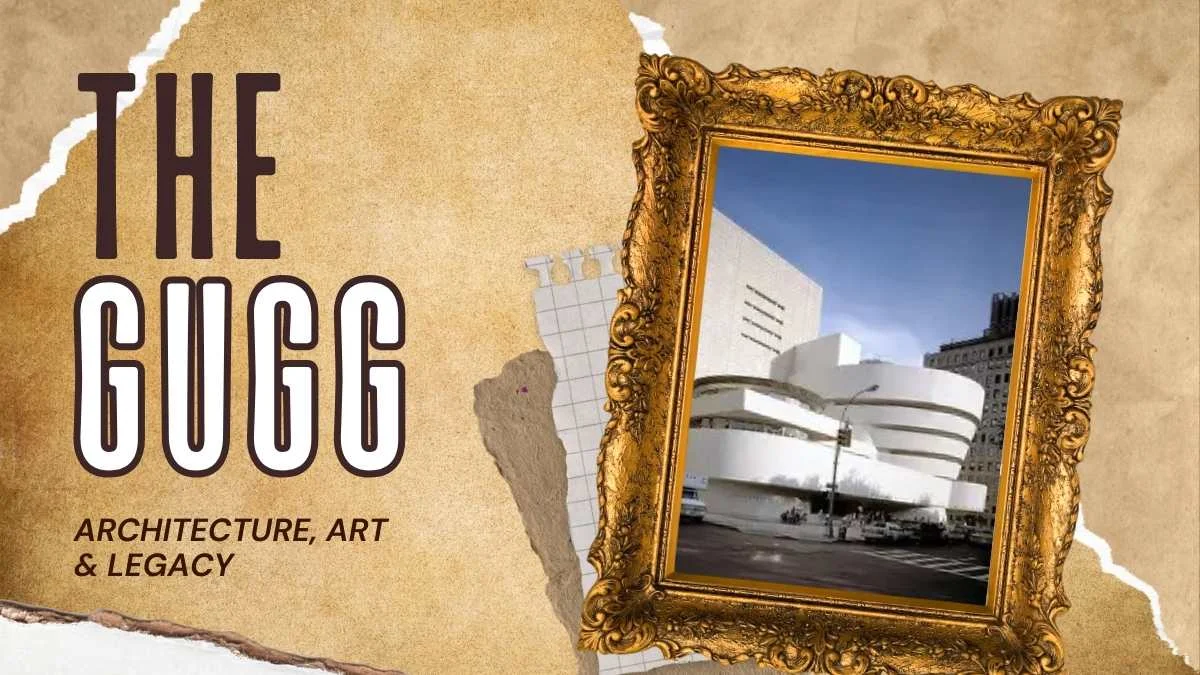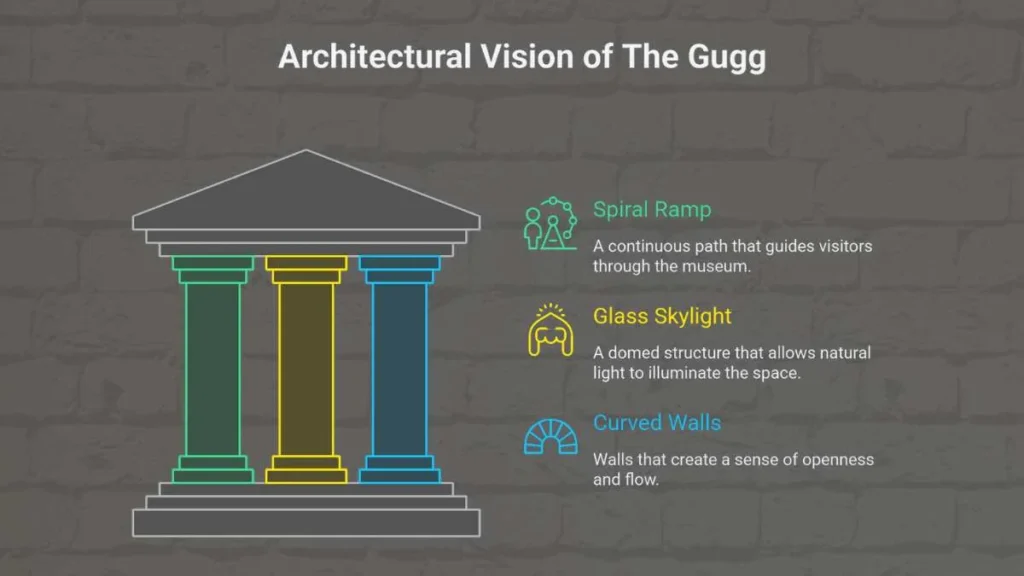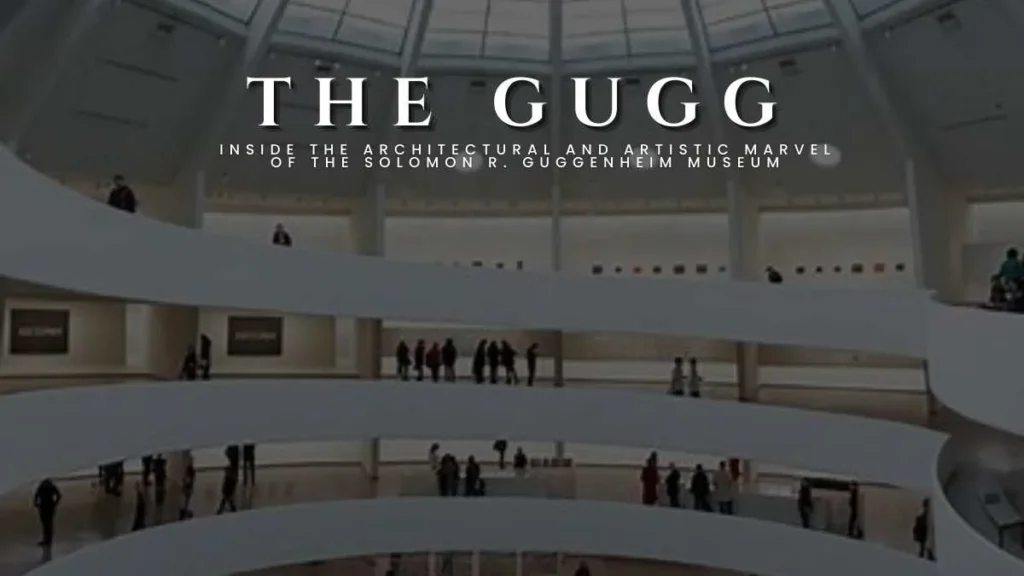EDUCATION
The Gugg: Architecture, Art & Legacy of NYC’s Guggenheim

The Solomon R. Guggenheim Museum, affectionately called The Gugg, is one of New York City’s most celebrated cultural landmarks. Far beyond a repository of modern and contemporary art, it stands as a design icon. Its revolutionary spiral structure, envisioned by legendary American architect Frank Lloyd Wright, redefined how visitors experience art.
Since its opening in 1959, The Gugg’s sweeping curves, soaring rotunda, and skylight-filled spaces have created an immersive environment that attracts millions worldwide. Alongside its New York presence, the Guggenheim name extends to sister institutions like Guggenheim Bilbao in Spain and the Peggy Guggenheim Collection in Venice, amplifying its influence on the global art stage.
Table of Contents
Origins of a Modern Art Vision
The museum’s roots trace back to philanthropist Solomon R. Guggenheim, guided by artist Hilla Rebay. In the 1920s and 1930s, Guggenheim began amassing a collection of groundbreaking works by pioneers such as Kandinsky and Mondrian.
This collection found a temporary home in the Museum of Non-Objective Painting, which opened in 1939 in Manhattan. However, Guggenheim sought a permanent space bold enough to match the art’s radical spirit, laying the foundation for the iconic museum we know today.
Frank Lloyd Wright’s Game-Changing Museum Design
Commissioned in 1943, Frank Lloyd Wright rejected conventional museum architecture, replacing box-like galleries with a fluid, organic concept. His design allowed for a continuous spiral ramp circling a vast central rotunda, encouraging a seamless, narrative viewing experience.
Key Architectural Features
- Sweeping spiral ramp guiding visitors from top to bottom
- A domed glass skylight floods the space with natural light
- Curved walls create openness and movement
This visionary layout turned the museum itself into a work of art.

The 1959 Opening: A New Chapter in Museum History
After years of delays due to war, funding, and design revisions, the Guggenheim finally opened on October 21, 1959, six months after Wright’s passing.
Its bold form divided critics; some celebrated its innovation, while others feared it overshadowed the art. The public, however, embraced it wholeheartedly. Recognition followed: National Historic Landmark status in 2008 and inclusion on the UNESCO World Heritage List in 2019.
Treasures of Modern and Contemporary Art
The Gugg’s collection spans movements and media, featuring masters whose works changed art history.
| Artist | Notable Work(s) | Art Movement | Key Characteristics |
| Vasily Kandinsky | Composition 8 | Abstract Art | Bold colors, geometric shapes, spiritual symbolism |
| Jackson Pollock | Autumn Rhythm (Number 30) | Abstract Expressionism | Drip technique, energetic movement, large-scale canvases |
| Pablo Picasso | Woman with Yellow Hair | Cubism / Modernism | Fragmented forms, multiple perspectives, innovative color use |
| Marc Chagall | Paris Through the Window | Surrealism / Modernism | Dreamlike imagery, folkloric elements, poetic symbolism |
| Louise Bourgeois | Maman | Contemporary Sculpture | Exploration of memory, emotion, and the human body |
Walking the Spiral: A Unique Visitor Journey
Unlike traditional museums with segmented galleries, The Gugg’s design guides visitors along a single, continuous ramp. Starting at the top and gently descending, guests encounter art in a carefully curated sequence.
The open rotunda offers sightlines to other levels, creating a dynamic interplay between architecture and artwork. This arrangement transforms viewing into a story-like progression rather than a fragmented experience.
Educational Outreach and Cultural Influence
Beyond its exhibitions, The Gugg actively engages with the public through:
- Lectures and panel discussions featuring leading artists and scholars
- Hands-on workshops for children and families
- Digital programs, including virtual tours and online talks
These initiatives reflect Solomon Guggenheim’s mission to make modern art accessible and relevant to all.

Visitor Information: Planning Your Guggenheim Experience
Located at 1071 Fifth Avenue at 89th Street on Manhattan’s Museum Mile, the Guggenheim is easily reached via public transit.
Opening hours:
Generally six days a week, with extended evening hours on select days
Admission:
Standard pricing with discounts for students and seniors; free entry on specific evenings
Services:
Museum store, café, and guided tours
For the best experience, begin at the top level and follow the spiral down, letting the architecture and art reveal themselves naturally.
Architectural Challenges and Lasting Innovations
While groundbreaking, Wright’s design introduced unique curatorial challenges. Curved walls complicated the hanging of traditional framed works, prompting innovative display techniques. Skylight glare required precise lighting adjustments, and advanced climate control systems were later installed to protect sensitive pieces.
A 1992 expansion by Gwathmey Siegel & Associates added a rectangular tower behind the rotunda, providing more gallery space and modern facilities while preserving Wright’s vision.
FAQs
Q1: What makes The Gugg different from other art museums?
Its continuous spiral ramp offers an uninterrupted, narrative-style art experience.
Q2: Does the museum host temporary exhibitions?
Yes, the Gugg regularly features rotating modern and contemporary art exhibitions.
Q3: Is the building itself considered a work of art?
Absolutely, Frank Lloyd Wright’s design is celebrated as an architectural masterpiece.
Conclusion
The Gugg is more than a museum; it is an architectural landmark, a cultural beacon, and a living testament to the transformative power of modern art. By marrying Wright’s revolutionary design with an ever-evolving collection, it offers an experience both intimate and monumental.
Whether you are captivated by its spiraling form, its world-class exhibitions, or its place within the international Guggenheim network, a visit to The Gugg is an encounter with the very essence of artistic innovation.
-

 FRIENDSHIP MESSAGES3 months ago
FRIENDSHIP MESSAGES3 months ago100+ Heart Touching Sorry Messages for Friends
-

 ANNIVERSARY WISHES3 months ago
ANNIVERSARY WISHES3 months ago100+ Beautiful Engagement Anniversary Wishes Messages and Quotes
-

 BIRTHDAY WISHES3 months ago
BIRTHDAY WISHES3 months ago200+ Unique Birthday Wishes for Your Best Friend to Impress on Their Big Day
-

 BIRTHDAY WISHES3 months ago
BIRTHDAY WISHES3 months ago20+ Fun and exciting activities or Surprise Birthday Ideas for Best Friend




































